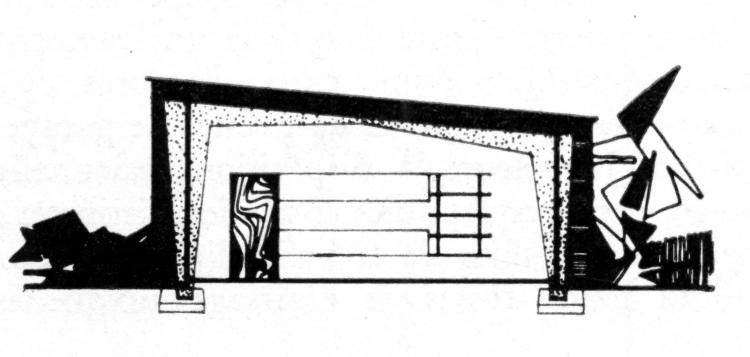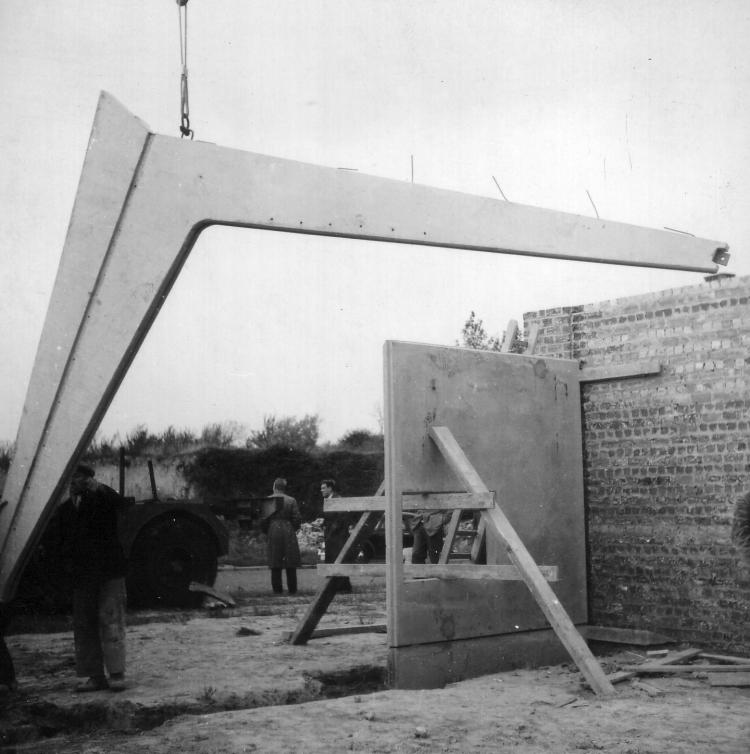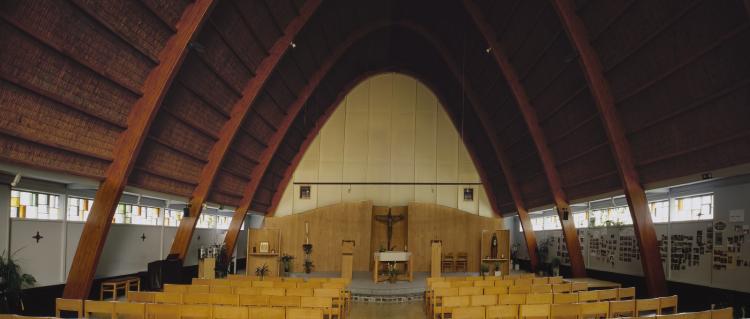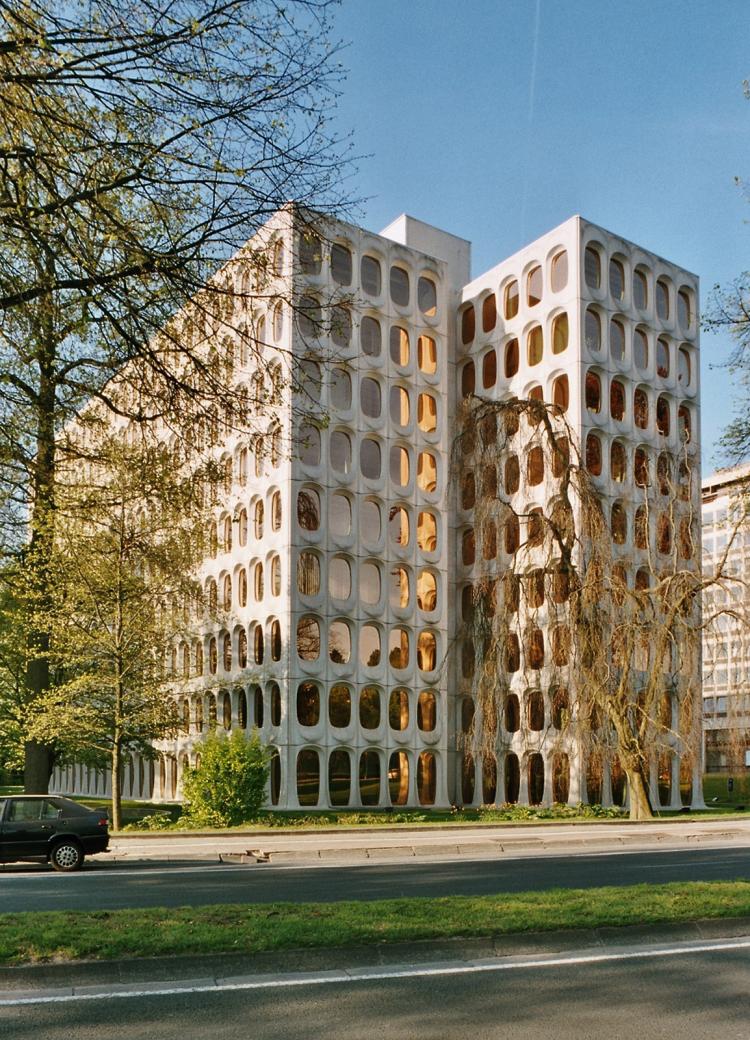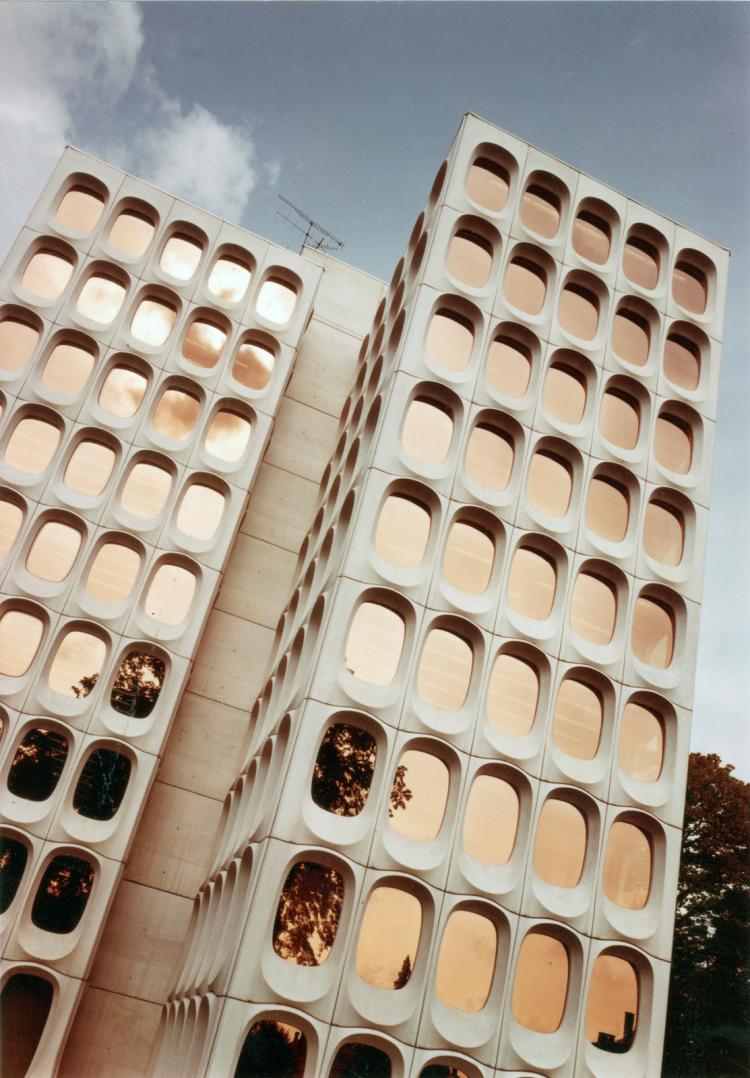Prefabrication
Prefabrication is one of
the key concepts of modern architecture. Compared to small-scale construction,
it enables considerable savings: elements are manufactured on a production line
and assembled in record time on the site, with finishing reduced to a minimum.
In this way, school wings, bungalows and chapels are erected in the blink of an
eye. But prefabrication also gives life to luxurious buildings made of modules
of calligraphic precision.
The Verregat school constitutes one of the first applications in Brussels of prefabricated school wings. Placed side by side at successive intervals, the classrooms are made up of a succession of concrete portal frames between brick side walls, supporting a sloping roof.
Chaville-type buildings are adopted by many schools at the beginning of the 1960s. Entirely prefabricated, they consist of a light steel frame, dressed with aluminium and enamelled glass curtain walls.
Particularly economical thanks to its light and standardised construction methods, the bungalow, originating from the United States, crosses the Atlantic in the 1950s. It will not however supplant our traditional multi-level constructions.
This chapel, planned at the outset to be temporary, was entirely prefabricated in the Ateliers d’Art De Coene Frères in Courtrai and assembled in the space of four months.
Belgium’s first plastic façade, that of the headquarters of the Parti social chrétien, juxtaposes prefabricated polyester elements reinforced with fiberglass. Their shape recalls the televisions of the time.
The prefabricated concrete modules of the headquarters of the CBR cement works are like a kind of flesh that presents the thinness of the commissures and the swelling of the lips of a face (Albert Bontridder).



